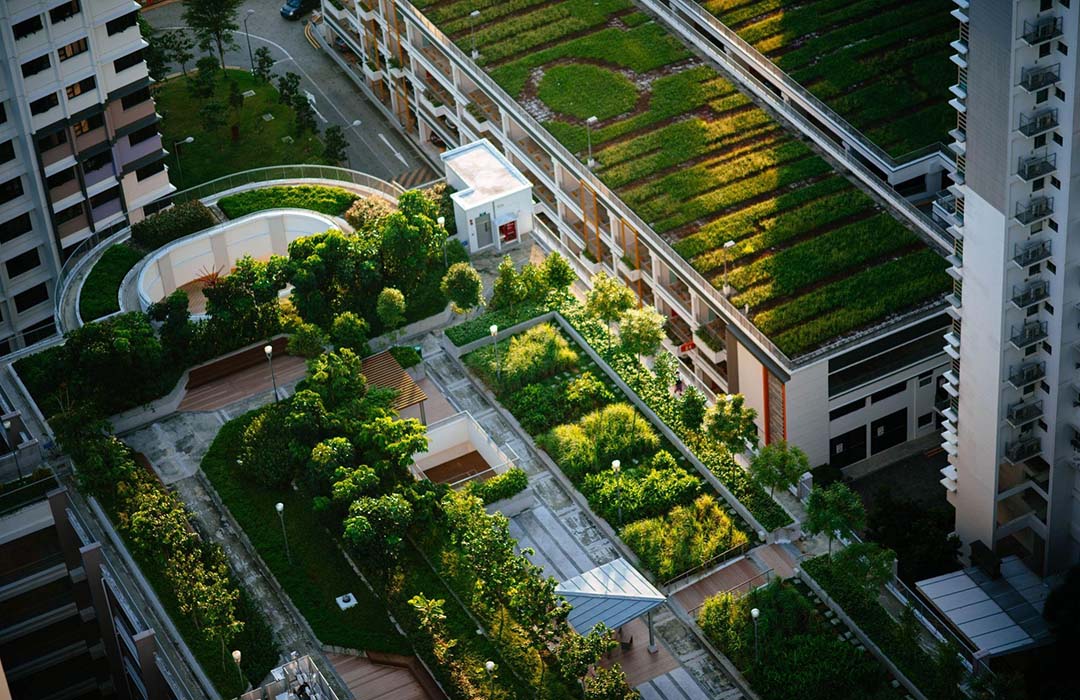Cities, along with the buildings and communities within them, are often seen as concrete jungles – and concrete contributes to environmental problems, such as increased carbon dioxide emissions. While we can’t take away all the concrete, there are ways to mitigate the problems it causes.
One way is to add plants, or green infrastructure, to roofs, walls, streets and other areas. Vegetation increases air quality, energy efficiency and stormwater management, while also bringing life to neighbourhoods and commercial buildings.
“Concrete absorbs a lot of heat, so greenery on roofs, which is wasted space, would be beneficial for cooling,” says Rushil Malik, marketing coordinator at Green Roofs for Healthy Cities.
Examples of green infrastructure include the Podium Green Roof at Toronto’s City Hall and Devonian Gardens inside The Core building in Calgary. While there are examples of such infrastructure in most cities, many people are unaware of the huge benefits.
Green Roofs for Healthy Cities is a non-profit association based in Toronto and working across North America. It increases awareness of living architecture, offering educational courses and conferences about green roofs and walls.
Through Nature Canada’s Work to Grow program, Malik works for the association to raise awareness and educate people about green infrastructure and how it benefits communities.
“Whenever I go out into the world, I notice green walls,” she says. “I love seeing ivy on top of brick buildings, going to gardens, or seeing patios that have gardens, and things of that nature in places that are more urban.”
It’s a niche, according to Malik, and not many people are aware of green roofs or walls, but when they see it implemented in local buildings, they see the value in it.
“That kind of design speaks to me, and I think it speaks to a lot of people, especially when you’re in places that are urban and have a lot of concrete,” she explains. “Greenery is important for everyone’s mental state. It’s just something that makes us feel calm.”
Various benefits of green roofs include retaining 70 to 90 per cent of the precipitation that falls on them, reducing greenhouse gases and smog, serving as a recreational space, and reducing daily energy demand for air conditioning.
The amount or carbon sequestered by a green roof depends on factors like size and what type of plants are present. Regardless, it still makes a notable difference.
Green roofs inspired Malik to start her career at Green Roofs for Healthy Cities. She wanted to work for a place that cares about local communities—and that offers something attainable to them. Her decision to work for an environmental cause is because of climate change and how it affects people of colour.
“Climate change will end up hurting people who have less power and less privilege,” she says. “I want to be able to help people and want to be able to implement things that I think are important in the world.”
Green infrastructure can be widely implemented through legislation and financial aid, as in the U.S., where Bill 1863, the Public School Green Rooftops program, will encourage schools to grow green roofs.
“Being able to make real change and encourage corporations, organizations and architecture firms to implement more green spaces is cool—and seeing how this industry has implemented policy around North America is really cool,” Malik says.
